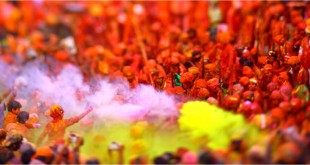 The term pop art is short for popular art. It emerged from the pen of English critic Lawrence Alloway in the late 1950s to describe what he viewed as a contemporary attitudinal shift in subject matter and techniques of art. Beginning in England in the mid-1950s and America in early ’60s, pop art focussed on everyday objects rendered through an adoption of commercial art techniques. In doing so, artists availed themselves of images and ideas culled from popular culture, including movies, comic books, advertising, and especially, television — faithfully reproduced in all their mass-produced glory. Thus, by making use of what had been dismissed as kitsch by the art establishment, pop artists whose works were displayed in museums effectively thumbed their collective noses at the distinction between highbrow and lowbrow art.
The term pop art is short for popular art. It emerged from the pen of English critic Lawrence Alloway in the late 1950s to describe what he viewed as a contemporary attitudinal shift in subject matter and techniques of art. Beginning in England in the mid-1950s and America in early ’60s, pop art focussed on everyday objects rendered through an adoption of commercial art techniques. In doing so, artists availed themselves of images and ideas culled from popular culture, including movies, comic books, advertising, and especially, television — faithfully reproduced in all their mass-produced glory. Thus, by making use of what had been dismissed as kitsch by the art establishment, pop artists whose works were displayed in museums effectively thumbed their collective noses at the distinction between highbrow and lowbrow art.
Check Also
गुणकारी हल्दी: एंटीसेप्टिक औषधि हल्दी के प्रकार और इसके लाभ
गुणकारी हल्दी: हल्दी प्रतिदिन व्यवहार में आने वाली तथा सामान्यतः भोजन में मसाले के रूप …
 Kids Portal For Parents India Kids Network
Kids Portal For Parents India Kids Network






